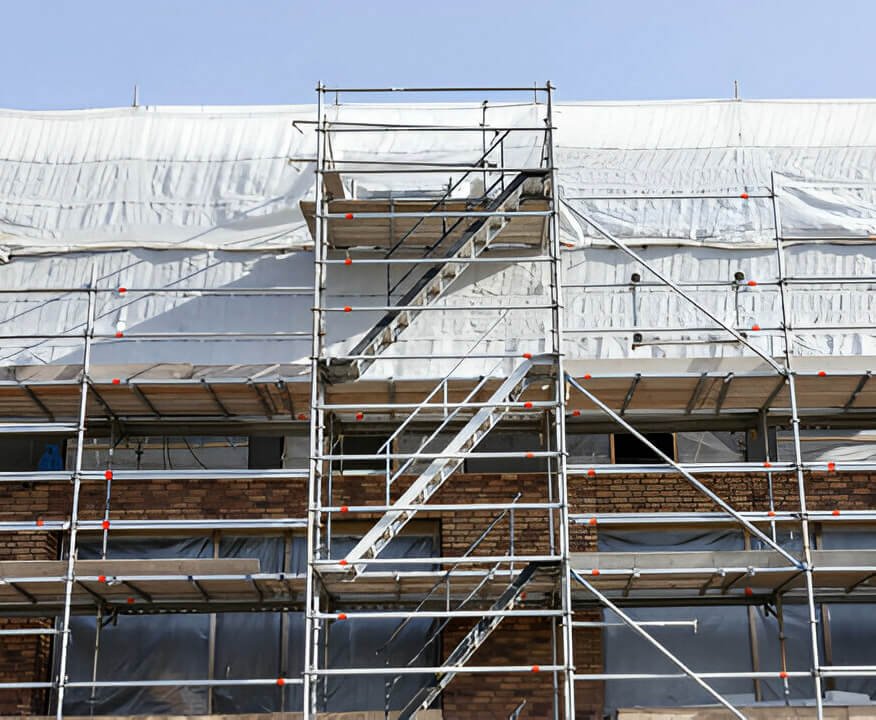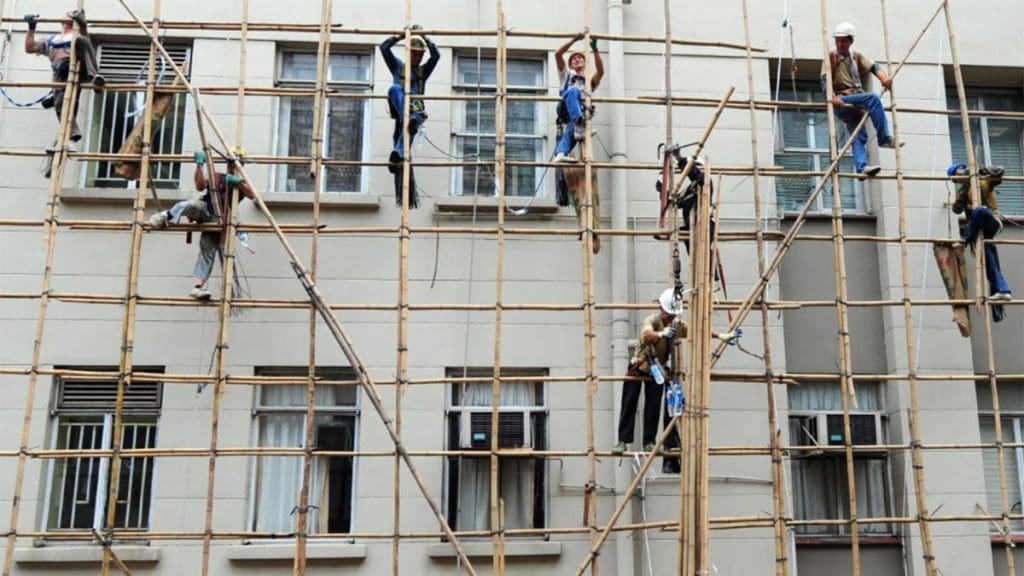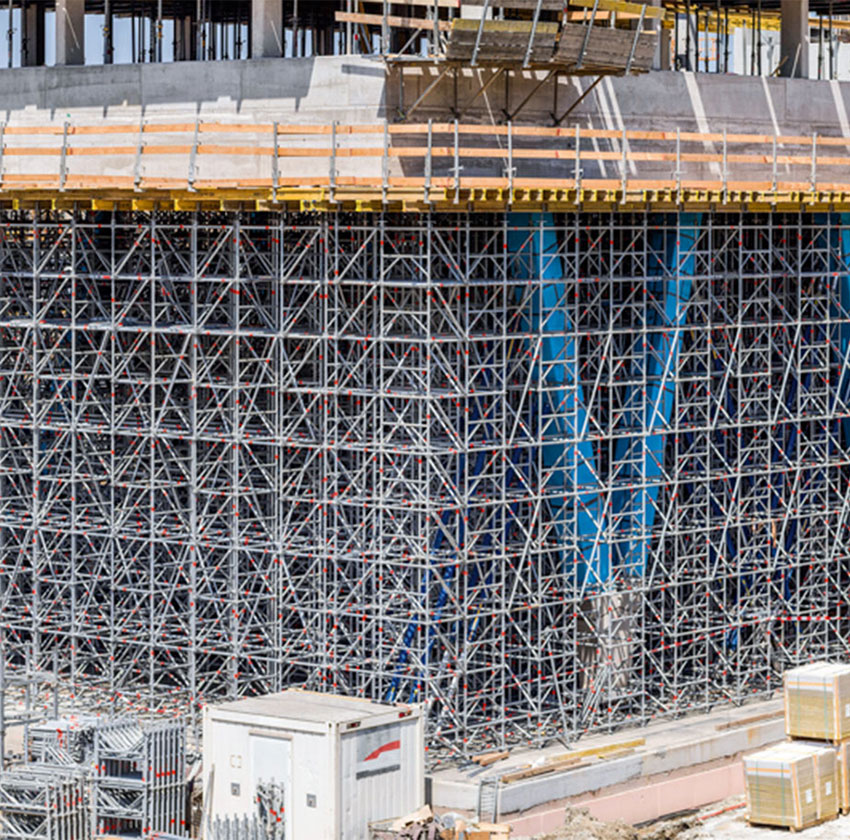Get the Best Scaffolding Cobham Services for Your Building Projects
Get the Best Scaffolding Cobham Services for Your Building Projects
Blog Article
Exploring the Numerous Sorts Of Scaffolding Utilized in Building And Construction Jobs
The building and construction market counts heavily on numerous types of scaffolding to meet certain project demands, each offering distinct benefits and applications. Traditional framework scaffolding gives a strong foundation for general jobs, while suspended scaffolding is important for work on high-rise frameworks.

Typical Frame Scaffolding
Conventional structure scaffolding is one of the most widely made use of methods in the construction industry because of its effectiveness and flexibility. This system includes upright and straight structures that are put together to produce a steady system for products and employees. The main parts consist of vertical messages, straight journals, and angled dental braces, which with each other give a solid framework that can sustain substantial tons.
One of the crucial advantages of conventional structure scaffolding is its versatility to different building and construction projects, ranging from residential structures to big business structures. The modular layout permits very easy setting up and disassembly, making it reliable for both lasting and temporary jobs. Additionally, the system can be tailored in height and size, suiting various structure styles and website conditions.
Security is paramount in scaffolding applications, and standard frame systems are equipped with guardrails and toe boards to prevent falls and make sure employee protection. Routine inspections and adherence to security guidelines are critical in keeping the honesty of the scaffold (Scaffolding). On the whole, typical structure scaffolding remains a fundamental option in the construction sector, giving a reputable platform for labor and boosting overall job efficiency

Suspended Scaffolding
Put on hold scaffolding uses a special option for building jobs that call for access to elevated surface areas, particularly in situations where typical framework scaffolding may be not practical. This kind of scaffolding is typically put on hold from the roofing system or top degrees of a structure, using a system of ropes, pulleys, and systems to produce a functioning room that can be adapted to various elevations.
One of the key advantages of put on hold scaffolding is its versatility. It can be easily rearranged or lowered to suit changes in building demands, making it suitable for jobs such as window installation, façade job, and maintenance on skyscrapers. Furthermore, the marginal footprint of suspended scaffolding permits far better use ground room in urban atmospheres, where space is usually limited.
Safety and security is a crucial factor to consider in the use of suspended scaffolding. Proper rigging and anchoring systems should be used to make sure security and protect against crashes. Operators needs to additionally be educated in the risk-free use of this tools. Overall, suspended scaffolding supplies a efficient and effective solution for accessing hard-to-reach areas in different building scenarios, boosting both performance and security on site.
System Scaffolding
System scaffolding, often considered a modern service in the scaffolding market, includes pre-engineered parts that can be swiftly set up and adapted for different navigate to this website building and construction jobs. Scaffolding. This type of scaffolding is characterized by its modular design, which enables convenience and performance on work websites, accommodating structural demands and different heights
Normally made from high-strength steel or light weight aluminum, system scaffolding provides boosted resilience and security. The parts include vertical blog posts, horizontal ledgers, and angled dental braces, which interconnect firmly, making certain a robust structure. The layout often includes standard installations, simplifying assembly and disassembly procedures, thereby decreasing labor time and expenses.

Rolling Scaffolding
Moving scaffolding is a versatile option to traditional set scaffolding, made for flexibility and ease of usage on building and construction sites. This kind of scaffolding consists of a platform sustained by frameworks with wheels, permitting employees to easily transfer it as needed. The wheelchair function considerably improves productivity, as it lessens downtime related to disassembling and putting together dealt with scaffolding.
Normally created from light-weight products such as aluminum or steel, rolling scaffolding uses a tough yet portable option for projects calling for constant repositioning - Scaffolding. It is especially advantageous in tasks such as paint, drywall installment, and electric work, where accessibility to various elevations and places is required
Safety and security is vital in rolling scaffolding layout, with functions such as locking wheels to avoid unplanned motion when in operation, and guardrails to protect workers from drops. click over here Additionally, numerous designs are flexible in height, suiting various task demands.
Cantilever Scaffolding

The style of cantilever scaffolding generally involves making use of arms or brackets anchored to a building or structure, enabling the platform to prolong outside securely. Safety is extremely important; therefore, these scaffolds need to be crafted to stand up to different lots and environmental problems. Regular assessment and maintenance are vital to ensure architectural integrity and worker safety and security.
Cantilever scaffolding is favored for its versatility and efficient use area, making it a preferred choice in urban environments where room restrictions are usual. Additionally, it helps with less complicated accessibility to high altitudes, ultimately contributing to the general effectiveness of building jobs. Just like all scaffolding types, proper training and adherence to security criteria are essential for workers making use of cantilever scaffolding.
Conclusion
Traditional frame scaffolding gives stability, while suspended scaffolding provides convenience for elevated jobs. System scaffolding assists in quick setting up, and rolling scaffolding improves flexibility for differing job atmospheres.
Typical frame scaffolding offers a strong foundation for general tasks, while put on hold scaffolding is essential for job on high-rise structures.Moving scaffolding is a versatile alternative to standard fixed scaffolding, designed for mobility and simplicity of use on building sites. As with all scaffolding types, appropriate training and adherence to security standards are crucial for employees making use of cantilever scaffolding.
Traditional framework scaffolding provides security, while suspended scaffolding offers convenience for raised jobs. System scaffolding assists in fast assembly, and rolling scaffolding boosts mobility for differing work settings.
Report this page